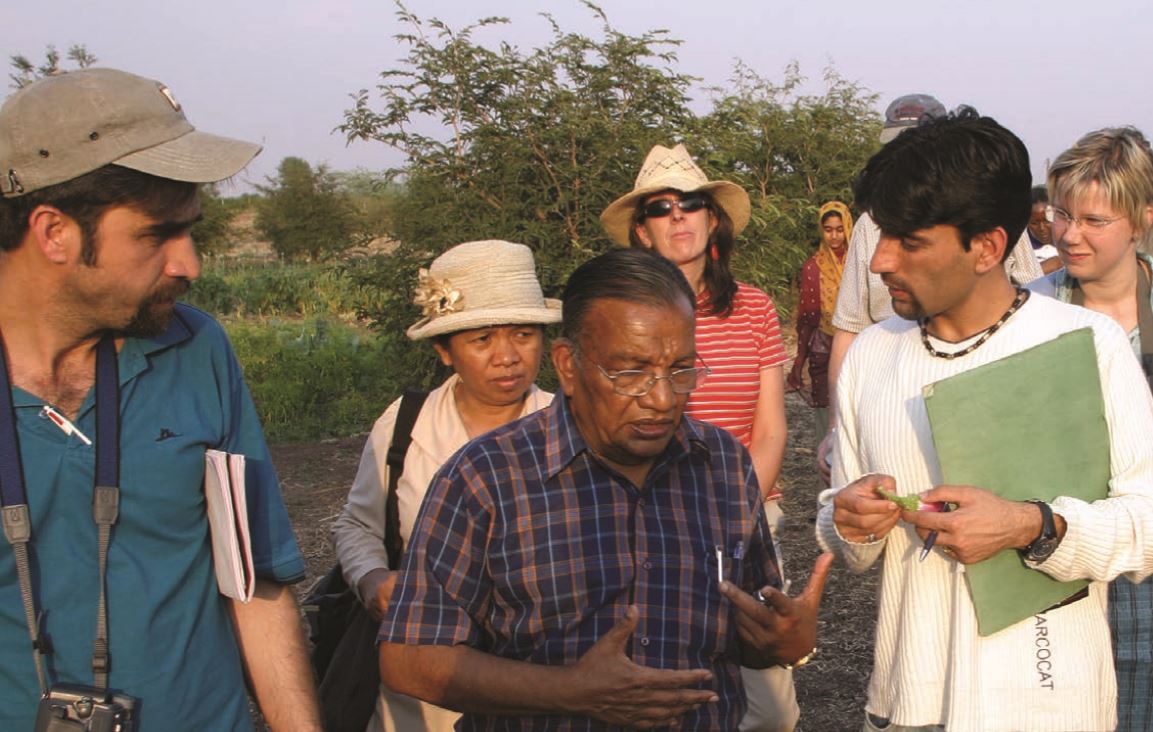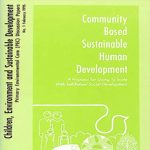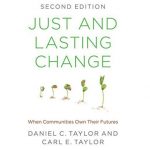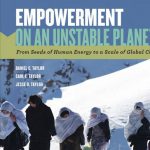The thesis that economic growth is the foundation of development has early roots, but by the mid-nineteenth century this thesis was being questioned. Nonetheless, by the mid-twentieth century the major momentum of society had accepted the economic growth model, an acceptance ascribed to by both capitalism and communism.
The capitalist view held that as people gained wealth they would accumulate resources with which to invest in healthcare, in the arts, and so on. Or as Marx articulated it, economics forms a base on which a superstructure of politics, religion, art, culture, is erected, but to advance the welfare of all choosing how the investments should be made should be done centrally. Following World War II the capitalist consensus had W.W. Rostow, W. Arthur Lewis, and others put forward that economic growth could transform all.[1] (Rostow described nicely the feedback loop of “take-off” where internal capacity within populations gets underway.) In reaction, building on the continuing scholarship from Karl Marx’s class struggle and ownership of economic resources, [2] radical reconstructionists such as Raul Prebisch, Paul A. Baran, and Paul M.Sweezy and liberal theologians such as Gustavo Gutierrez argued that transforming production and workers’ control would create a new social order,[3] and doing so required changing the economic order by separating production from international markets. Peter Evans, Fernando Henrique Cardoso (after an earlier Marxist stance), and others realized that confrontation was unlikely to succeed, and argued not for challenging the system but for working within the system: the poor should join in dependent relationships and within that context accumulate wealth.[4] More recently neoliberal thinkers subscribed to this basic approach, supporting creation of the World Trade Organization, arguing to reduce economic regulation and let market forces rule while forces of the state recede.[5]
Actors and authors in this economic world are many, but they all hold to the centrality of the basic economic thesis. What the SEED-SCALE thesis does is to return to the fork in the road seen by Ruskin, followed with dramatic effect by Gandhiji, and say (integrating the work of economists such as Ward, Sen, Margolin, and others as shown below) that there is a more universal commodity that nurtures human capacity and expands access to social change so that all can participate.
When the Berlin Wall fell in 1989, the common view was that it fell because of the success of the capitalist approach, that the “liberal market” was the inevitable path for human society. The presumption that economic growth was the way became even more entrenched, and a chorus of voices rose for loosening the shackles that held back the planet’s economic engine. Action followed with the major globalization moves of the 1990s. But this victory of capitalism, which one thinker went so far as to dub “the end of history,”[6] is far from being as complete as its celebrants suppose (and certainly there are other explanations for the fall of the Soviet system, such as internal failures), and even Francis Fukayama, this particular celebrant, revised his assessment.[7] But what did not change was the presumption that economic growth was the engine.
Around this discussion of economic growth during this period evolved a complex but important argument about the sustainability of economic growth; that it must occur within limits of planetary resources. The Brundtland Commission (World Commission on Environment and Development)[8] was the early voice on this, and mounting evidence confirmed that the planet was destroying natural balances.[9] In fact, economic growth may be breaking down even our relationship with nature.[10] The term sustainable development is being increasingly dropped, but the belief in economic growth as the foundation of human advancement is not—even when the Great Recession of 2008/9 sent out its shock waves. Indeed, a series of further shock waves seem to be mounting that further challenge the wisdom of committing only to economic growth: climate change, the Great Recession, and the category of challenges of exclusion of peoples, civil unrest, pandemics, and poverty that remains as the wealthy advance.
The economic dynamic is not flawed but perspective on it should change so as to be seen as one among many fibers in the rope that pulls society forward. Economic growth might even be viewed as a steel cable down the middle of the rope, but natural fibers are around this cable that are grown by the energies of people; these include: recognition of the contributions of women, the enabling roles of health and education, networks among people that allow for exchange of knowledge, systematized change using scientific progress, mediating structures of governance. What braids these together is the common resource of human capacity building.
Economists themselves are expanding this understanding. One component added was the role of knowledge.[11]Amartya Sen widened understanding in another way, highlighting the role of equity and then subsequently pointing to the need to expand people’s options and freedoms.[12] Benjamin Friedman added the observations of the moral consequences of economic policies and how they fit within political and social histories.[13] Vijayendra Rao and Michael Walton expanded the context further, placing economic growth within culture and relations among people, analyzing the process as “a set of contested attributes, constantly in flux, both shaping and being shaped by social and economic aspects of human interaction.”[14]
But this morphing, increasingly complex, largely Western discourse (even though Third World economists were participating) frustrated many in the Third World who were trying to figure out how to move their countries forward. Pragmatically, they wanted to deliver results to their people. In 1999, these leaders, calling themselves The South Commission, spoke with rare unity in a report calling for expanded South-to-South cooperation. They said that responsibility for development rested with the mobilization of their own resources and with unity among their own people, that outside money was not enough, and that their economies must be self-fueling.[15] They were aware that something more rested in their societal capacities, but they could not articulate how to do it.
One approach to figure out how has been to identify targets, as a business would, then apply effective interventions to specific goals. This approach was advocated most significantly by the United Nations when it put forward the Millennium Development Goals. Identify clear targets, put price tags on them, and nations will step forward to pay the bills, because such goals are in the world’s self-interest. Some, such as Jeffrey Sachs, assumed high profiled positions maintaining that demonstrations will catalyze action. The world has not responded to these calls. Bringing in more movie stars or getting more presidents to speak out is not likely to prompt action at this time just as such calls did not do so before, especially when virtually every country is now first focused on its own economic condition. Communities are attending to their own self-interest.
Indeed, the problem is deeper than just figuring out how better to sell the idea. Ramping up a major global economic development push comes with some deep unanswered questions. First, who really benefits? Is there evidence to show that development will work if it is the aid-driven model of action presumed most proposals? A growing number of skeptics claim that the real beneficiaries are the agencies that administer the aid and not those who are the stated recipients.[16] Equally important we suggest, is to ask whether the process is causing the marginalized to relinquish vital self-reliance when they join such proposals; indeed are they giving up the critical role that they themselves can play and the resources they themselves have to these new programs.
Even if all such essential aspects exist, there exists a dynamic that defeats most Outside-in and Top-down processes. That dynamic is avarice. Avarice is the great not solved feature of outside-in assistance, brushed off usually by blaming governments as corrupt and accounting practices as non-transparent. But blame should not dismissed so easily—this is blaming the recipient for actions taken by a knowing actor—adopting a methodology known ahead of time to be flawed carries with it obligations on the part of the one using that approach. Avarice is a great, unanswered challenge that cannot be dismissed. Avarice claims its margins, and the current momentum of development action that continues to feed this insatiable corrupting influence cannot be justified because an alternative way does exist.
The key is the right kind of people’s participation.[17] When people are engaged such that their energies are brought in, empowerment is the result. Today even economic growth institutions such as the World Bank increasingly see the empowerment of people as central to the economic engine.[18] [19] Including the people now is nearly universally accepted as a component of development, it no longer needs to be argued.[20] That people have something vital to say about their destiny, people who used to be called backward or even barbaric, is no longer debated—but this voice of the people while always spoken of is seldom truly listened to.
How can people be included? Many ways of engaging community are being used;[21] but four are relevant to the challenge of empowerment: community can be a designated physical place or the setting for action; community can be a target group to which a service is delivered; community can be a resource being paid to work; and community can be the agent by which planning and work is done.[22] It is important not to confuse the four uses of community—empowerment results only when people are the agent of change. Community may also in these instances be the setting, the target, or a resource; in each community-based work can be underway, and people may be using their energy, but for energy to grow into empowerment people need to have agency, and what is important in that is sharing control of the process.
This approach that positions economic growth, technology, health, and the like, on a foundation of the capacity of empowered people does not challenge other premises of development. SEED-SCALE does not join those who argue that intentional development is exploitative: “a tiny minority of local profiteers, supported by their ‘patrons,’ set out to devastate the foundations of social life in countries. A merciless war wages against the age-old traditions of communal solidarity.”[23] While such anti-imperial argumentation is still attractive after the capitalist-communist struggle as it returns to a good-bad dialectic being used by those who seek to mobilize the masses, such confrontation, (or worse a tear-the-edifice-down attitude) is not the mobilization of people that SEED-SCALE advocates, although many who advocate insurrection claim the empowerment word.
This approach differs fundamentally from traditional “development.” It seeks to complement existing services, while allowing all services to find their appropriate roles. Neither Seed-Scale nor traditional development is “right;” both must be in balance—and then each supports the other and true going to scale occurs. Jason Calder, helpfully distinguished the differences between the two approaches as follows:
| SEED-SCALE | Traditional Development | |
| Key Resource | Human Energy | Financing |
| Planning Mindset | Evolutionary Growth | Construction Engineering |
| Planning Process | Agenda=>Plan=>Budget | Budget=>Agenda=>Plan |
| Who Does the Work | Three-way Partnership | Professionals |
| Implementation Structure | Local Institutions | Consultants/Project Units |
| Ultimate Accountability | Community | Donor |
| Approach | Build on Successes | Fix Problems/ Needs |
| Criteria for Decisions | Evidence | Power, Opinions & Habits |
| Major Desired Outcome | Behavior Change | Measurable Results |
| Criteria for Evaluation | Strengthening 4 Principles | Budget Compliance |
| Learning Mode | Iterative, Experimental | Get it right the first time |
| Management Mode | Mentoring | Control |
| Commitment Horizon | Depends on Utility of Partnership | Depends on Donor’s Budget Cycle |







